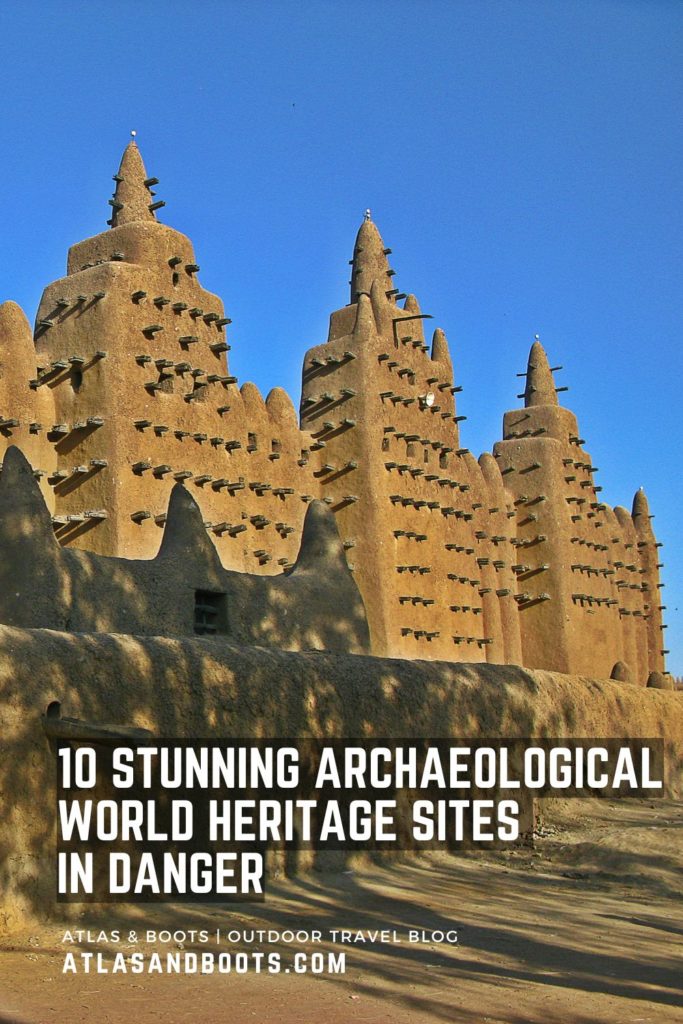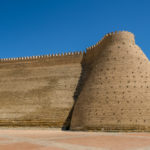We share our favourite man-made marvels currently on UNESCO’s World Heritage Sites in danger list
If we asked you to name a famous World Heritage Site, there’s a good chance you would say the Great Pyramids of Giza. Other likely contenders are the Great Wall of China, the Taj Mahal, Machu Picchu and Petra. These archaeological sites are some of man’s greatest marvels and are accordingly celebrated and protected.
Not all World Heritage Sites, however, enjoy the same security. Our own Stonehenge nearly landed on the World Heritage in Danger list last year due to plans to build a two-mile tunnel nearby.
Thankfully, the UK has managed to stay off the list unlike 33 other countries including the US, Austria and Egypt. Some of the endangered sites – like Jerusalem or Everglades National Park – are well known, but most suffer in obscurity despite their objective beauty and cultural value. Below, we share 10 stunning archaeological World Heritage Sites in danger.
World Heritage Sites in danger
These man-made marvels were designated as World Heritage Sites in danger by UNESCO. Each is listed along with the year it was added to the danger list. In total, there are currently 56 properties on the full list.
1. Minaret and Archaeological Remains of Jam
Country: Afghanistan
Year: 2002
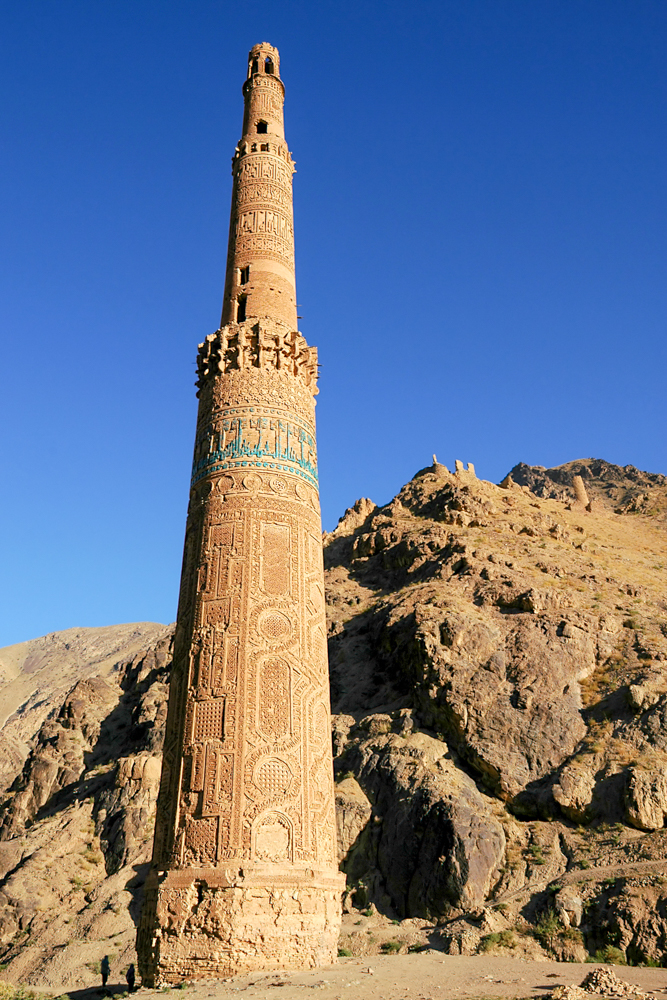

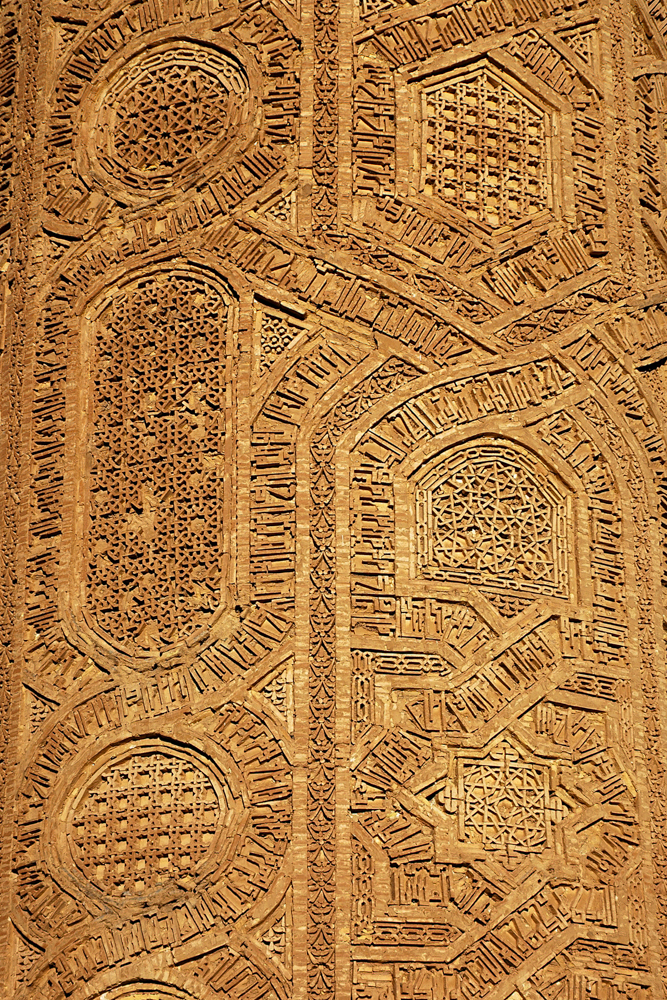
Jonathan Wilson/Dreamstime
The Minaret of Jam
The Minaret of Jam stands 1,900m above sea level in a rugged, remote valley where the Hari-rud River meets the river Jam, 215km east of the city of Herat. The 65m-tall structure dates back to the 12th century and is thought to mark the site of the ancient city of Firuzkuh.
The minaret has a 9m diameter octagonal base with four cylindrical shafts constructed from fired bricks. The elaborate brickwork and blue tile inscription are a noteworthy representation of architectural and artistic tradition in this region.
Since the building of the minaret around eight hundred years ago, no reconstruction or extensive restoration work has ever taken place in the area. UNESCO recommends a long-term conservation policy that monitors the erosion of the riverbanks adjacent to the minaret.
2. Samarra Archaeological City
Country: Iraq
Year: 2007
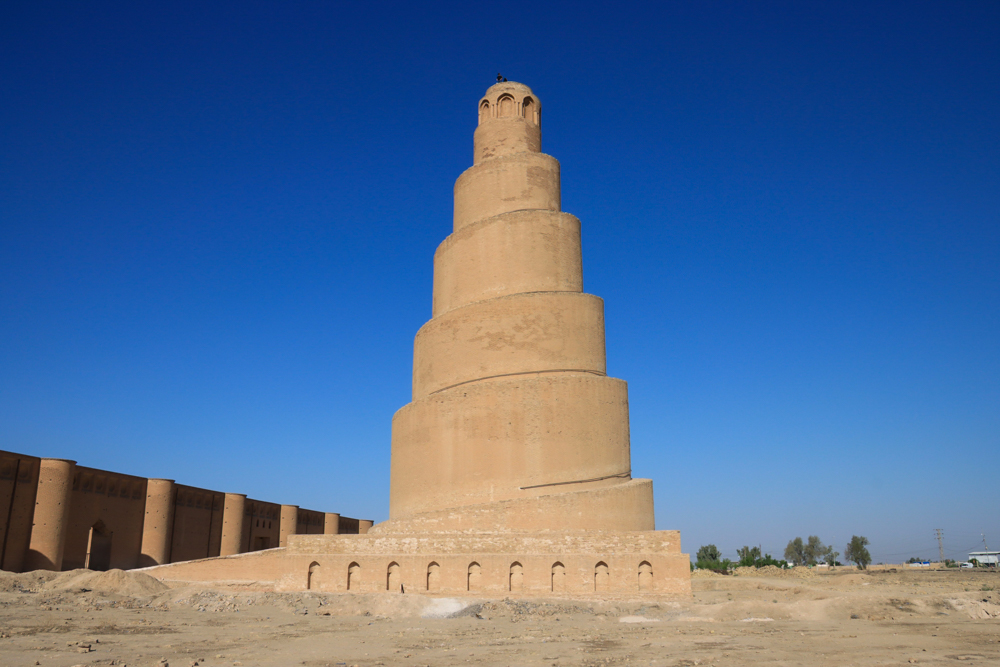
Samarra Archaeological City provides extraordinary evidence of the Abbasid Caliphate, a major Islamic empire that extended from Tunisia to Central Asia.
Dating from 836-892, Samarra is the only surviving Islamic capital that retains its original plan, architecture and arts, due to it being abandoned relatively early and so avoiding the constant rebuilding of other ancient cities.
The city is notable as it preserves the largest palaces in the Islamic world (the Caliphal Palace Qasr al-Khalifa, al-Ja’fari, al Ma’shuq, and others) as well as two of the largest mosques (Al-Malwiya and Abu Dulaf) and one of the most unusual minarets.
Since the war in Iraq began in 2003, Samarra has been occupied by multi-national forces that use it as a theatre for military operations. UNESCO cites the inability of responsible authorities to control and conserve the site as the principal reason why it’s on the World Heritage Sites in danger list.
3. Archaeological Site of Sabratha
Country: Libya
Year: 2016
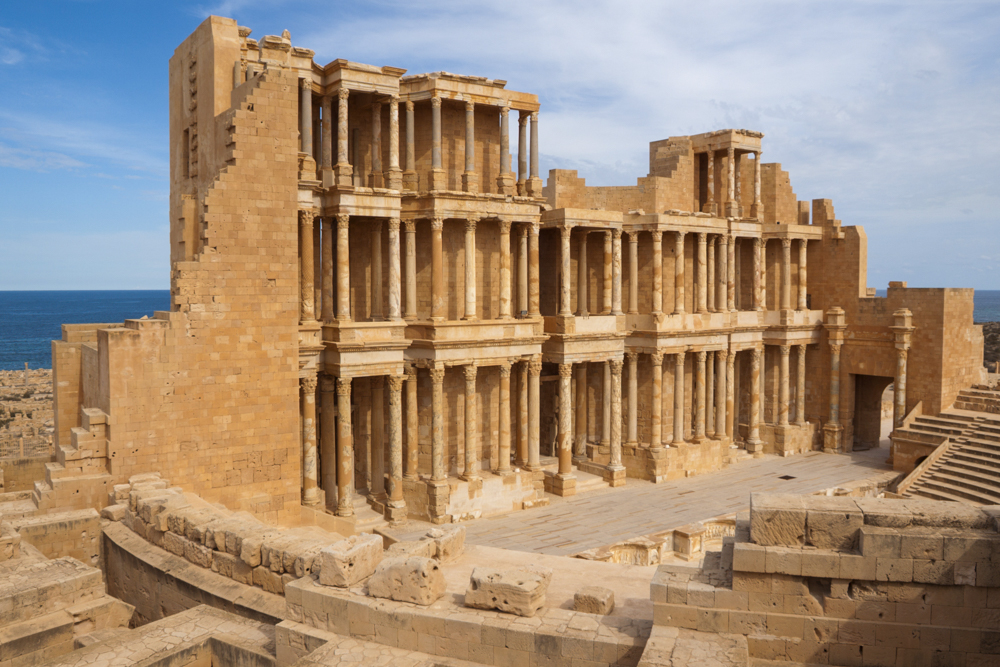
The Archaeological Site of Sabratha was once a Phoenician trading-post that served as an outlet for the products of the African hinterland. It was part of the short-lived Numidian Kingdom of Massinissa before being Romanised and rebuilt in the 2nd and 3rd centuries AD.
In 2016, the site was damaged in a number of armed conflicts. Whilst some areas were unaffected, the theatre was heavily affected by the crossfire.
4. Old Towns of Djenné
Country: Mali
Year: 2016
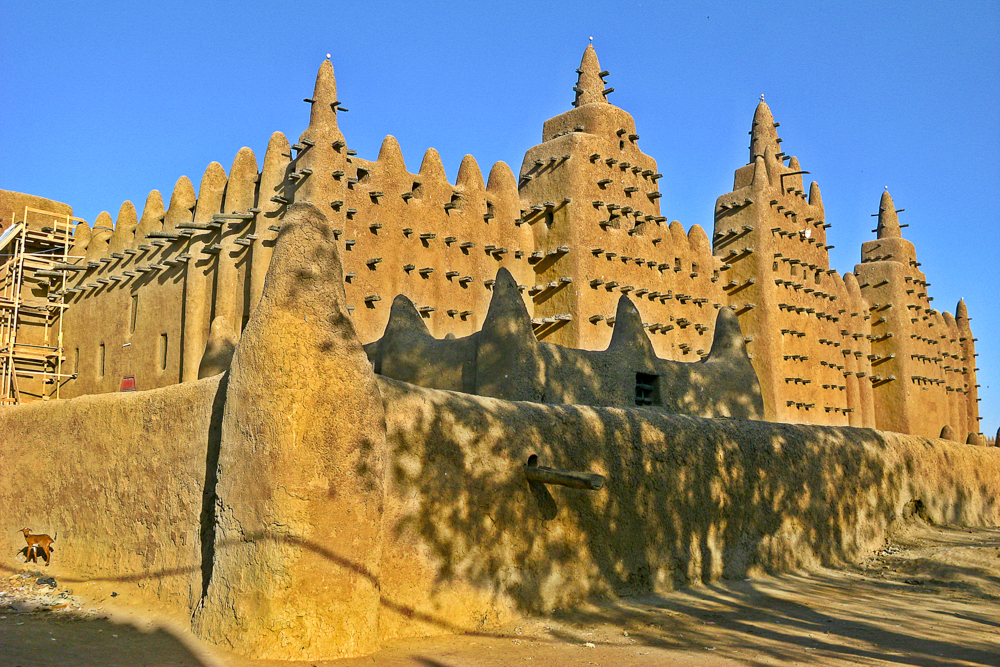
Djenné is one of the oldest towns in sub-Saharan Africa. Located 570km north-east of the capital, Bamako, it is part of four archaeological sites – namely Djenné-Djeno, Hambarkétolo, Kaniana and Tonomba – which constitute the “Old Towns of Djenné”.
The property is remarkable for its intensive use of earth in its architecture. The Great Mosque of Djenné is a particularly outstanding example of this.
UNESCO recommends a conservation plan to protect against an increase in population and building speculation, and better defined boundaries for the current protection zone.
5. Chan Chan Archaeological Zone
Country: Peru
Year: 1986
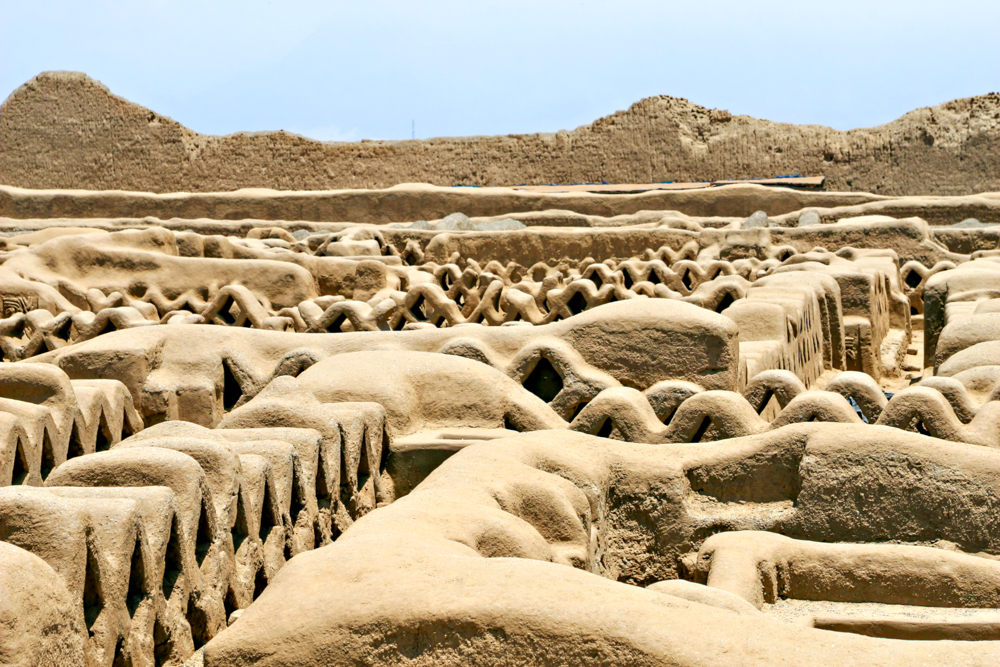
Chan Chan is an archaeological site in the Peruvian region of La Libertad. Built around 1300, it covers 20 square kilometres, making it the largest Pre-Columbian city in America as well as the largest adobe city in the world.
At the height of the Chimú empire, the city’s 10 walled citadels housed an estimated 60,000 inhabitants and contained a vast wealth of gold, silver and ceramics.
The property is protected by national law, but long-standing issues around land tenure, the relocation of illegal settlers and illegal farming practices have yet to be effectively resolved to ensure the long-term conservation of the property.
6. Bosra
Country: Syria
Year: 2013
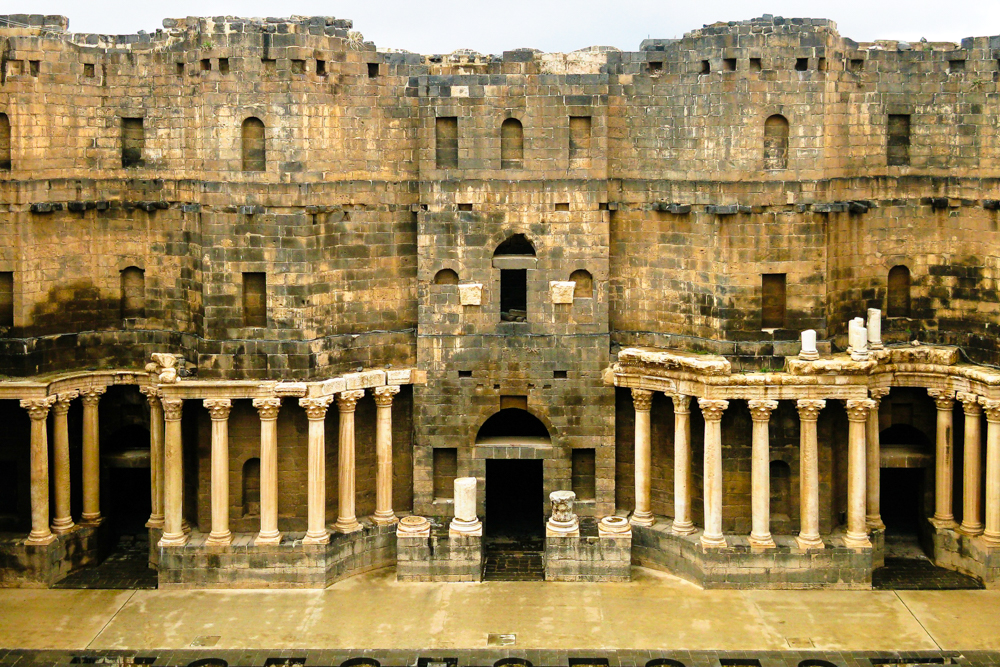
Bosra, once the capital of the Roman province of Arabia, was an important stopover on the ancient caravan route to Mecca. Its main feature is the 2nd century Roman Theatre, thought to have been constructed under the Roman emperor Trajan and fortified between 481 and 1251 AD.
Bosra survived about 2,500 years of inhabitation almost intact. The Nabataeans, Romans, Byzantines and Umayyad all left traces in the city. Al-Omari Mosque is one of the oldest surviving mosques in Islamic history while the Cathedral of Bosra is of considerable importance to early Christian architecture.
Bosra is protected by law, but there is no management plan for the site and there are problems with conservation due to community issues and a lack of funds, technical resources and skilled labour.
7. The Historic Centre of Odesa
Country: Ukraine
Year: 2023
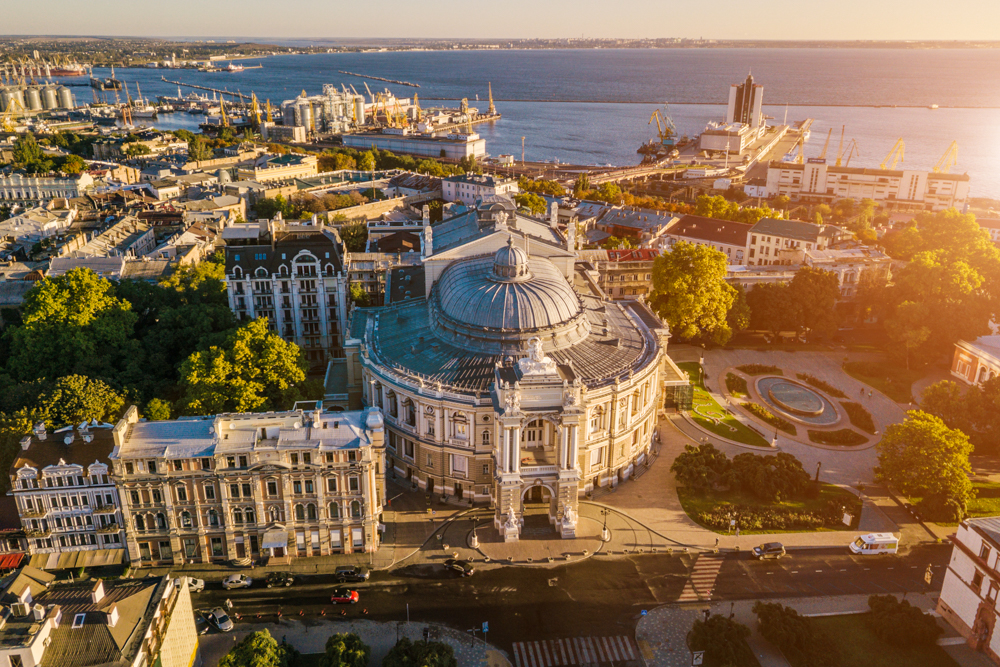
The historic centre of Odesa is part of a port city on the Ukrainian shores of the Black Sea. The city was founded in 1794 as a warm-water port following the conclusion of the Russo-Turkish war of 1787-1792.
The new city, built on the site of a Turkish fortress, was initially planned by a military engineer and expanded during the 19th century in an eclectic blend of architectural styles.
Odesa has been the target of shelling and air strikes following Russia’s invasion of Ukraine. UNESCO has strongly condemned these strikes and expressed its support for the local population and authorities.
8. Historic Centre of Shakhrisyabz
Country: Uzbekistan
Year: 2016
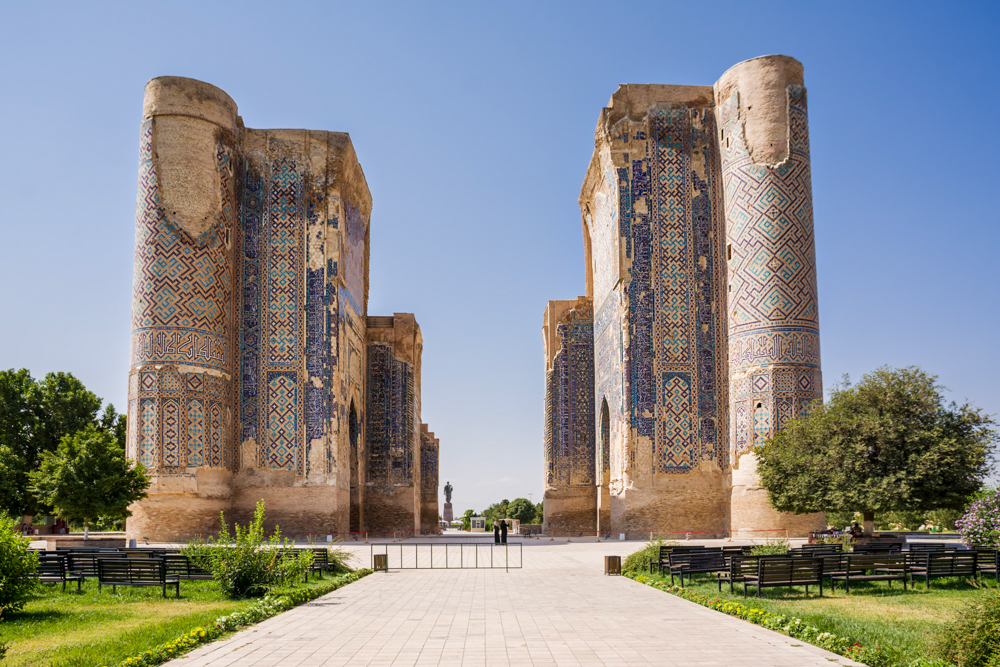
The Historic Centre of Shakhrisyabz is over 2,000 years old. Located on the Silk Roads in southern Uzbekistan, it was the cultural and political centre of the Kesh region in the 14th and 15th century.
The site contains outstanding monuments dating from the period of the Temurids (15th-16th century) as well as mosques, mausoleums, and entire quarters of ancient houses within its medieval walls.
The main monuments are in good condition, but extra funds are required for restoration projects such as that of the city walls and the long-term safeguarding of the site.
9. Old City of Sana’a
Country: Yemen
Year: 2015
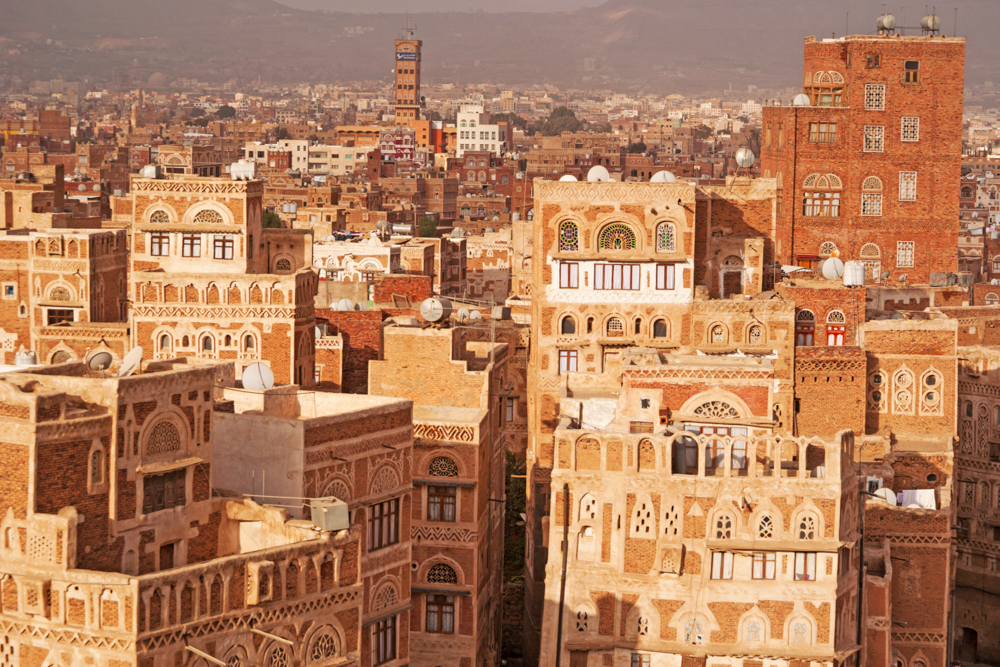
The Old City of Sana’a sits in a mountain valley at 2,200m above sea level. It has been inhabited for more than 2,500 years and played an important part in the propagation of Islam during the 7th and 8th centuries.
The city has 103 mosques, 14 hammams and over 6,000 houses, all built before the 11th century. It is particularly remarkable for its extraordinary density of rammed earth and burnt brick towers decorated with geometric patterns of fired bricks and white gypsum.
UNESCO recommends that an adequate buffer zone be established around the old city to ensure its long-term protection.
10. Old Walled City of Shibam
Country: Yemen
Year: 2015
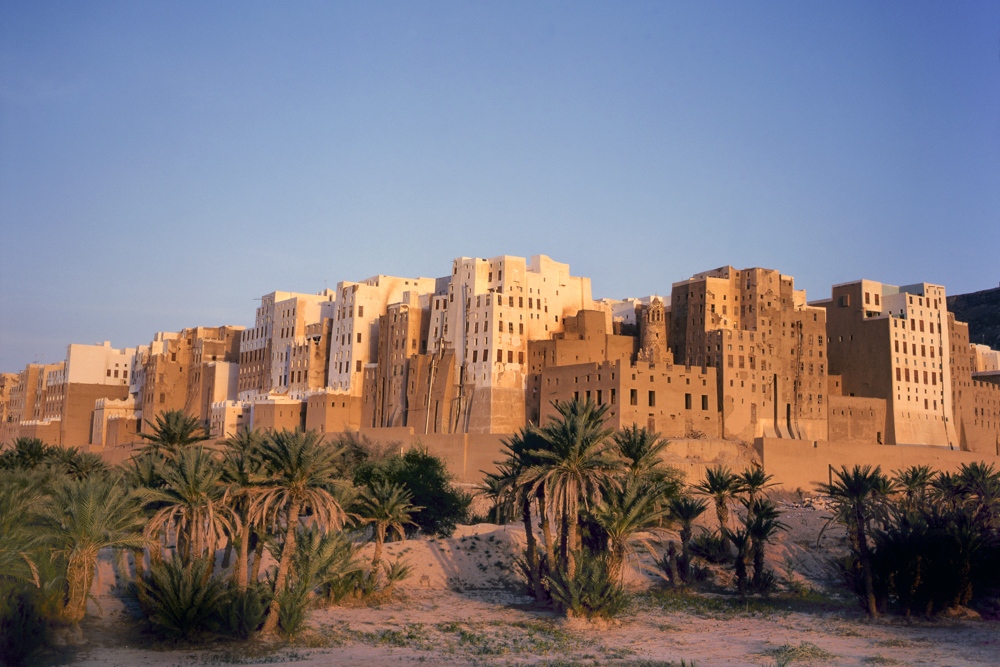
The 16th-century city of Shibam is known as ‘the Manhattan of the desert’. It is one of the oldest and best examples of urban planning based on vertical construction. Its tower-like structures rise up to seven storeys high in a rectangular grid plan of streets and squares, all contained by a fortified wall.
The city is built on a rocky spur several hundred metres above the wadi bed. The visual impact as well as the city’s functional design and construction techniques make for an outstanding example of Arab and Muslim architecture.
Local authorities have restored more than 60% of the private traditional houses, but need more means and support to sustain long-term management.
Enjoyed this post? pin it for later…
